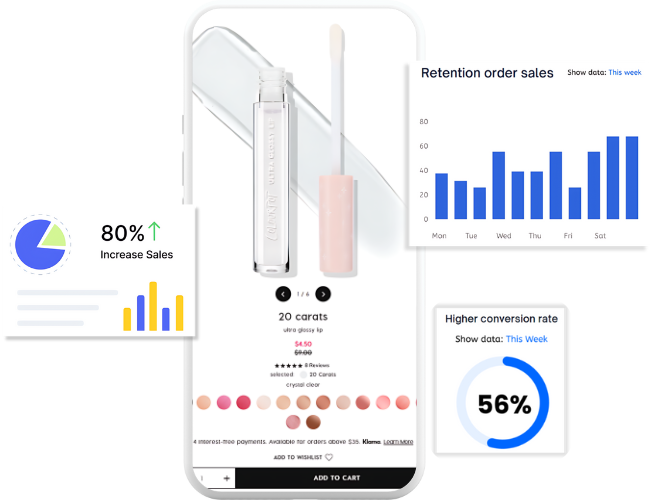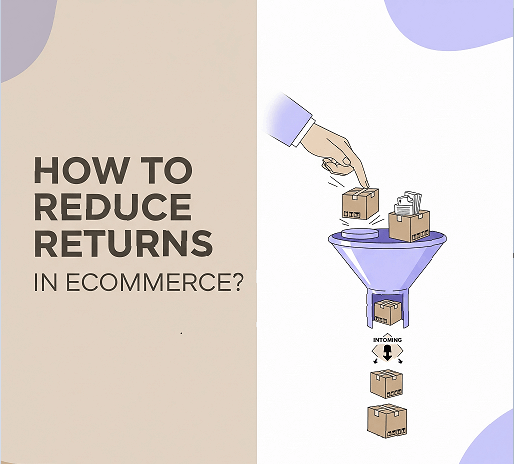Thanks to the digitalization of shopping activity, e-commerce is undoubtedly an indispensable part of the retail industry. Selling and purchasing products online have become as convenient as going around the block for grocery shopping.
Shopify and Magento are two major players in the e-commerce industry. Even though the transition between these two platforms involves rather complicated steps, there are more online store owners migrating from Magento to Shopify.
To migrate from Magento to Shopify, the checklist is the essential information you need to have. Apart from that, his article will provide everything helpful for migrating from Magento to Shopify.
Why choose Shopify over Magento?
Let’s start with a brief introduction to Magento and Shopify. Magento, established in 2008, is an open-source platform for e-commerce, which is famous for its robust customization. Shopify, launched in 2004, is a cloud/SaaS solution for millions of online stores around the world, working on both the front and back end of the business.
The question comes as to why more customers are choosing Shopify over Magento for the business.
Shopify is easier to use
Shopify is much more user-friendly, even for a customer who does not know how to write a single line of code. The interface on Shopify is super clear and straightforward. However, due to the open-source nature of Magento, it requires a lot of coding to customize your store.
Shopify is friendly to non-English speaking customers
Shopify serves customers all around the world, customers do not necessarily need to understand English to open a store on Shopify. Rather surprisingly, English is a must on Magento.
Shopify is more transparent and protects customers’ interests
Magento might not be the optimal choice for SMEs financially. The price of services stands against Magento. Plus, in terms of revenue sharing, the process on Magento is not clear and transparent, which makes clients insecure.
What data should be migrated from Magento to Shopify in 2025?
Before you export your data from Magento to Shopify, you may want to know what kind of data will be necessary and useful for your Shopify store. There are several types of data that you need to consider.
1. Product data
The most important information in your store, it would be a big trouble if you lost product data. You can export as much data as you wish but do remember to transport the following essential data about the product to Shopify, which will save you an enormous amount of time when setting up a new store on Shopify.
a. Product name
b. Product description
c. Product price
d. Product image
e. Stock Keeping Unit (SKU) number
2. Customer data
Existing customers are significantly valuable to a business. It costs much more to develop a new customer than to maintain an existing customer. Opening a new store on Shopify does not mean starting everything from scratch. It would help a lot if you could use the customer data in the previous store on Magento.
a. Customer usernames
b. Customer information
c. Order history
d. Customer preferences
e. Customer password
3. Oder data
Historical data can be utilized to analyse your business
a. Payment detail
b. Shipping information
c. Order details
4. Collections
You may have collections or categories on your website, which helps customers to easily locate the products they are looking for.
a. Collections
b. Categories
5. SEO data
Every store spends a great deal of time improving the SEO ranking, and it is a time-consuming process. It is highly recommended to export your SEO data so that you can easily apply it to your new Shopify store.
a. Redirects
b. SEO metadata
6. Content Data
Content data on your website presents more information about your store and could also be reused in your Shopify store.
a. Blog posts
b. Information pages
Magento to shopify migration checklist
Preparation for Migration from Magento to Shopify
· Review all the features and data that you wish to transport from Magento to Shopify. Check out if the features you have in Magento are available on Shopify.
· Register a Shopify account for a trial period and try to get familiar with the interface and functionality.
Migration Process
· Arrange the admin setting
· Export data from Magento to Shopify
· Organize products by categories
· Customize your website
· Set up domain and shipping method
· Configure tax
· Choose payment provider
· Checkout procedure
· Info, policy and social media page
· Third-party integration
· SEO and URLs
· Rules for data and reports
· Customer service
Post Migration:
· Arrange 301 redirects
· Check all the procedures
· Test order, updates and functionality check
· Invite previous customers
8 Steps to migrate Magento to Shopify in 2025
Migrating from Magento to Shopify can be easy if you follow the following steps. There are 8 steps in total with details.
Step 1: Backup your Magento store before migration
It is always recommended to be cautious. You should take a backup of your Magento store, saving all important data and information. Just in case you encounter some issues with the migration, you don’t want to lose all your data. In the Magento backend, there are three ways to back up your data.
• System Backup
System backup stores everything about your Magento store and data.
• Media and database backup
Media and database backup makes a copy of your database and the media folders you have on your website
• Database Backup
Database backup only allows you to back up your database
Go through the different types of data that are available on Magento, including product data, customer data, order data and so on.
Step 2: Get your Shopify store ready
Arrange the setting in your Shopify store. Make sure everything is set up from the front end to the back end.
There are different plans on Shopify that you can subscribe to. Before selecting the most suitable plan for your store, it is highly recommended to make the best use of the free trial. Once you make your decision on the plan, you should start adding content to your Shopify store. You can customize your Shopify URL in the beginning.
Set up your “About Us” and “Policies” page. There are hundreds and thousands of third-party apps that can be integrated with Shopify to help you manage your Shopify store and boot sales.
Step 3: Decide what data on Magento is needed for a Shopify store
This step is very important. It is recommended to make a list of data that you wish to export so you don’t miss any important data. There are many types of data available on Magento. Please see the following list of the most used data types.
1. Product data
- Product description
- Product price
- Product image
- Stock Keeping Unit (SKU) number
2. Customer data
- Customer usernames
- Customer information
- Order history
- Customer preferences
- Customer password
3. Oder data
- Payment detail
- Shipping information
- Order details
4. Collections
- Collections
- Categories
5. SEO data
- Redirects
- SEO metadata
6. Content Data
- Blog posts
- Information pages
Step 4: Export your data from Magento to CSV files
As usual, log in to your account in the Magento Admin Panel.
Once you are in, you will see a menu bar at the top. Click “System” and you will see “Import/Export” in the drop-down window. After clicking “Import/Export”, choose “Export” to extract data from Magento.
You will see a pop-up window showing different exporting settings, including entity type and export file format. Remember to select “CSV” because Shopify CSV import is the efficient way to do it.
Once you confirm the export settings, just leave other checkboxes as default. Click “Continue” at the end of the page. In this way, your Magento Product/Shopify CSV file is downloaded.
Step 5: Use an import app for the migration
To make the migration seamless, software engineers have developed many apps and services to facilitate the Magento to Shopify data migration. Most of the third-party import apps share similar features.
The most important feature is data mapping. It allows you to map your data from Magento to its corresponding field in Shopify. It ensures structured and accurate data migration. These import apps are capable of handling large datasets, which saves precious time for entering data manually.
Utilizing data migration services can further streamline this process, ensuring that all data transfers smoothly without loss or corruption.
Some import apps can even detect errors and generate reports. This function can be very helpful if your store has a great amount of data. Recommended data import apps can be found on Channelwill, an all-in-one platform for e-commerce. You can find apps are integrated with Shopify to import data as well.
Step 6: Import your store data to Shopify
Once you complete the previous five steps, it is time to finally import data to Shopify. Please follow the following processes.
Firstly, you need to log into your Shopify admin. On the left-hand side, you will see a list of tabs. Click “Apps” and then find “Importer Store”. After that, you need to select “Magento” in the drop-down menu. After that, you will see “Upload Files” and then “Add file”.
Select the Magento CSV file that you downloaded on Magento. Click “Continue import”. You can also use the Shopify import template. That’s how you import external data to Shopify, and the next thing you do is wait patiently as data migration can be time-consuming.
Alternatively, you can hire an agency that provides Magento to Shopify migration service.
Step 7: Go through and review all imported data
Even though those import apps are very accurate and efficient, they could make some mistakes sometimes. Therefore, you are recommended to always go through and review your data carefully once they are on Shopify. Ensure every step is proceeded correctly and we hope you can have a seamless migration from Magento to Shopify in one go.
There are some common issues that you may encounter in data migration.
For example, data might need minor changes. The formatting of data on different platforms could vary and could also lead to errors during the data migration. If you find out minor errors, you can edit them manually.
Additionally, it could happen that product variants are not completely transported from Magento to Shopify successfully. Product variants are important features of the product, including colour, weight, size and so on. If it did happen to you, you should go back to Magento, export the missed data separately and then import it to Shopify.
Step 8: Customize your Shopify store and set up essential settings
Once you have completed 7 previous steps, you are not far away from selling your products in your Shopify store. However, the one last step also plays a crucial part in a successful data migration from Magento to Shopify. In this step, you can always reach out to the Shopify development team for help with decorating your store.
Domain Integration
If you have a domain name already, you can connect to the existing domain name. Otherwise, you can either purchase a domain from Shopify or Purchase through a third-party provider.
Shipping Settings
Shipping is an indispensable part of e-commerce and has a huge impact on customer’s shopping experience. You need to set up your shipping address, rates, strategies and shipping zones.
Payment Provider
You need to set up payment methods so that your customers can pay for their products. There are many options you can choose from, including debit card, credit card, Alipay, WeChat Pay or even cryptocurrencies. You are recommended to consider the most commonly used payment method in your target market.
Final Test
You should try everything that a customer will do in your Shopify store to check if everything works as you expect. For example, making, refunding, cancelling an order and so on.
Common problems might be encountered during migration
Problems during a migration from one platform to another are inevitable, even with the best planning. Let me show you some common issues that Shopify store owners encounter during migration.
Incomplete data
This is the most common problem during migration. If you find out you have missed some data, you may need to go back to the data selection step and check if you forgot to include the data. If you cannot solve the problem by yourself, you are recommended to consult the Shopify development team.
Broken product images
Product images are the most straightforward way to let customers know what you are selling. Incorrect image URLs could lead to this result. Hence, the first thing you should do when the product images are not showing is to check the URLs.
Poorer SEO Ranking
Your SEO Ranking might drop after the Magento to Shopify migration. The common problem is store owners forgetting to set up 301 redirects for their old URLs. You can use the integrated SEO applications on Shopify to improve your SEO ranking. Customer service on Shopify also guides store owners to set up redirects.
3 popular tools that help migrate data from Magento to Shopify
1. Cart2Cart
Cart2Cart is a Magento to Shopify importer for online stores. It is an automated migration framework, which means you don’t need to know anything technical knowledge or skills to successfully migrate from one platform to another. The good thing about it is that Cart2Cart offers a 5-hour trial period. In the 5-hour trial, you can try all the functionalities on Cart2Cart. For some small stores, 5 hours is long enough to transfer all the data. However, the success migration rate recorded on its website is 90%.
2. Matrixify
Matrixify is an App that helps you to manage your store data. What’s special about Matrixify is that it is built for Shopify, successfully meeting Shopify’s highest standards in all aspects, including speed, merchant value and convenience. It can be used directly in Shopify admin. There are four pricing packages ranging from $0 – $200 per month. The free plan has a very tight limitation on numbers. It could be quite expensive if you have a lot of data to migrate from one platform to another.
3. Smart Bulk Image Upload
Smart Bulk Image Upload is an App that takes care of uploading your product images in bulk. The reason why it is accurate and efficient is that it has many matching options, including product names, barcodes, item codes and so on. If you use Smart Bulk Image Upload, you can maximise the number of images uploaded in one go. However, the free monthly plan can only upload up to 25 images and the unlimited version costs $69 a month.
5 tips for a design & customize Shopify store after migration
There are 5 tips for designing and customizing your Shopify store. You can either change the settings in Shopify or use an e-commerce platform like Channelwill to further customize your store. Channelwill has an excellent customer service team who you can always turn to. You can also find many useful Apps in the Shopify app marketplace.
1. Design your unique Shopify store
The aesthetic design of your store gives your customers the impression that influences how they view your products. Giving out a positive first impression is the first step in closing a deal. A good design improves conversion and leads.
More importantly, a clear and clean design of your Shopify store promotes customer experience by making the whole shopping experience easy and comfortable. A bad-looking store normally can’t outperform a good-looking store. The question is how to make your Shopify store look nicer.
There are pre-made Shopify themes that can be further customized in Shopify. Alternatively, you can hire a professional Shopify theme developer to solve your problem.
2. Use site navigation
When browsing in an online store, the most annoying thing is getting lost on the website. It could be caused by having a poor presentation. Sometimes, customers find it difficult to navigate to the product or the collection they are looking for.
The solution is setting up site navigation and categorizing your products into different collections. Nowadays, online customers are used to navigating their target products according to the menu and the menu has been proven the most efficient tool to find products.
It’s worth noting that the navigation varies between different Shopify themes. Therefore, before selecting a Shopify theme, remember to find out which navigation you think is suitable for your store.
3. Improve SEO Ranking
What is the most effective and efficient way to increase sales? As an online store, the answer is improving the SEO ranking of your store. With a higher ranking in search engines, the chance of getting more customers in your store is higher. Therefore, it is vital that you customize your Shopify store SEO-friendly.
It could happen that you have a lower SEO ranking after migrating from Magento to Shopify. However, there are lots of SEO tools on Shopify that you can utilize to have a higher SEO ranking. For example, SEOAnt, by Channelwill, is a very powerful tool to make your store appear higher in search results.
4. Integrate with third-party Apps
There are tons of third-party Apps integrated with Shopify that you can use to make your store stand out. If you are targeting multiple countries where people speak different languages, you should integrate your store with translation Apps. In this way, you can provide customers from all over the world with a comfortable and local shopping experience.
You should also add third-party Apps to improve post-sales service. Post-sales service plays a vital role in repurchase. Customers are normally curious about where their parcels are and when they will receive the parcel. Therefore, integrating parcel-tracking Apps, such as ParcelPanel, could improve the shopping experience enormously.
5. Diverse payment methods
Nowadays, customers pay in various ways. With the development of financial technology, more convenient payment methods have been invented. For example, many people in China do not own a card that allows them to purchase products on a foreign website. Alipay and WeChat Pay are the most convenient payment methods for Chinese customers.
If your store is open up to more methods of payment, you can attract more customers. The most used payment methods are credit cards, debit cards, Apple Pay, Google Pay, WeChat Pay and Alipay. You can even include cryptocurrency if you wish.
FAQS
1.What data can’t be migrated directly from Magento to Shopify?
Not all types of data can be migrated directly from Magento to Shopify. You need a third-party App to transfer some data types, such as blogs, customer passwords and past orders.
Given that each platform has its inclusive features, Magento-specific data cannot be migrated. This could be because these data types do not work on Shopify, including Magento store credit, Magento theme, Magento custom extensions and so on.
2.How much does the Migration from Magento to Shopify cost?
The cost for migration from Magento to Shopify is totally up to you and the size of the project. If you decide to do it by yourself, the only thing that costs is using third-party apps to migrate your data. The cost is up to the third-party app, ranging from $0 to $200.
However, if you hire a professional team to take care of the migration, it could cost from $500 to $27,000.
3.How to save costs in the Magento-to-Shopify Migration?
Most people say Magento to Shopify Migration is very expensive. If you hire a professional agent to take care of the migration of your store data, it will cost a lot and is not affordable for small online stores.
The reason for that is most people don’t know how to deal with the migration by themselves. Nowadays, with the help of this information page and excellent applications, you can easily handle this situation even without any technical knowledge or skills.
Outro
The page contains all the information you need to migrate your Magento store data to Shopify. beginning with the reasons why you should choose Shopify over Magento as your platform, we elaborate on each step of the migration process. We provide you with a simplified checklist that keeps you on track and also discuss the issues you may encounter during the process with solutions.
To make a seamless migration, we highly recommend you utilize third-party applications. Channelwill, an all-in-one platform for e-commerce, has several Apps that are useful for migration, such as SEOAnt, ParcelPanel, Langwill and so on. Its expert team and customer service team are very professional and responsive, and you can always turn to them during a data migration.



